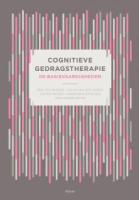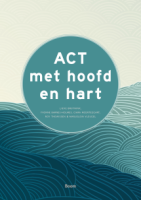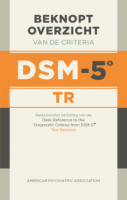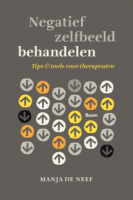Inhoud
Repetitief denken als een transdiagnostisch proces
Samenvatting
Het huidige artikel geeft een geüpdatet overzicht van repetitief negatief denken als een transdiagnostisch proces. Het is aangetoond dat verhoogde niveaus van repetitief negatief denken bij een groot aantal As I stoornissen aanwezig zijn, en bovendien blijkt dit soort denken oorzakelijk verbonden met de instandhouding van emotionele problemen. Gezien directe vergelijkingen van repetitief negatief denken tussen verschillende stoornissen (bijv. GAS-type piekeren en depressief rumineren) over het algemeen meer gelijkenissen dan verschillen tonen, wordt betoogd dat repetitief negatief denken gekarakteriseerd wordt door hetzelfde proces bij verschillende stoornissen, welke toegepast wordt op een stoornisspecifieke inhoud. Aan de andere kant zijn er aanwijzingen dat - binnen bepaalde stoornissen - repetitief negatief denken betrouwbaar onderscheiden kan worden van andere vormen van terugkerende cognities, zoals obsessies, intrusieve herinneringen of functionele vormen van repetitief denken. Concluderend wordt een agenda voorgesteld voor toekomstig onderzoek naar repetitief negatief denken vanuit een transdiagnostisch perspectief.
Literatuur
- Abbott, M.J., & Rapee, R.M. (2004). Post-event rumination and negative self-appraisal in social phobia before and after treatment. Journal of Abnormal Psychology, 113, 136-144.
- Abramowitz, J.S., Whiteside, S., Kalsy, S.A., & Tolin, D.F. (2003). Thought control strategies in obsessive-compulsive disorder: A replication and extension. Behaviour Research and Therapy, 41, 529-540.
- Barnard, P.J., Watkins, E.R., Mackintosh, B., & Nimmo-Smith, I. (2007). Getting stuck in a mental rut: Some process and experiential attributes. Paper presented at the BABCP Annual Conference, Brighton, 13-15 September 2007.
- Becker, E.S., Goodwin, R., Holting, C., Hoyer, J., & Margraf, J. (2003). Content of worry in the community: What do people with generalized anxiety disorder or other disorders worry about? Journal of Nervous and Mental Disease, 191, 688-691.
- Behar, E., Zuellig, A.R., & Borkovec, T.D. (2005). Thought and imaginal activity during worry and trauma recall. Behavior Therapy, 36, 157-168.
- Borkovec, T.D., Alcaine, O.M., & Behar, E. (2004). Avoidance theory of worry and generalized anxiety disorder. In R.G. Heimberg, C.L. Turk & D.S. Mennin (Eds.), General 18 Ehring & Watkins: repetitief negatief denken ized anxiety disorder: Advances in research and practice (pp. 77-108). New York, NY: Guilford.
- Borkovec, T.D., & Inz, J. (1990). The nature of worry in generalized anxiety disorder: A predominance of thought activity. Behaviour Research and Therapy, 28, 153-158.
- Borkovec, T.D., Robinson, E., Pruzinsky, T., & DePree, J.A. (1983). Preliminary exploration of worry: Some characteristics and processes. Behaviour Research and Therapy, 21, 9-16.
- Clark, L.A., & Watson, D. (1991). Tripartite model of anxiety and depression: Psychometric evidence and taxonomic implications. Journal of Abnormal Psychology, 100, 316-336.
- Eccleston, C., Crombez, G., Aldrich, S., & Stannard, C. (2001). Worry and chronic pain patients: A description and analysis of individual differences. European Journal of Pain, 5, 309-318.
- Ehring, T., Frank, S., & Ehlers, A. (2008). The role of rumination and reduced concreteness in the maintenance of posttraumatic stress disorder and depression following trauma. Cognitive Therapy and Research, 32, 488-506.
- Ehring, T., Fuchs, N., & Kläsener, I. (2009). The effects of experimentally induced rumination versus distraction on analogue posttraumatic stress symptoms. Behavior Therapy, 40, 403-413.
- Ehring, T., Zetsche, U., Weidacker, K., Wahl, K., Schönfeld, S., & Ehlers, A. (2011). The Perseverative Thinking Questionnaire (PTQ): Validation of a content-independent measure of repetitive negative thinking. Journal of Behavior Therapy and Experimental Psychiatry, 42, 225-232.
- Fink, P., Ornbol, E., Toft, T., Sparle, K.C., Frostholm, L., & Olesen, F. (2004). A new, empirically established hypochondriasis diagnosis. American Journal of Psychiatry, 161, 1680-1691.
- Freeman, D., & Garety, P.A. (1999). Worry, worry processes and dimensions of delusions: An exploratory investigation of a role for anxiety processes in the maintenance of delusional distress. Behavioural and Cognitive Psychotherapy, 27, 47-62.
- Freeston, M.H., Ladouceur, R., Rheaume, J., Letarte, H., Gagnon, F., & Thibodeau, N. (1994). Self-report of obsessions and worry. Behaviour Research and Therapy, 32, 29-36.
- Fresco, D.M., Frankel, A.N., Mennin, D.S., Turk, C.L., & Heimberg, R.G. (2002). Distinct and overlapping features of rumination and worry: The relationship of cognitive production to negative affective states. Cognitive Therapy and Research, 26, 179-188.
- Guastella, A.J., & Moulds, M.L. (2007). The impact of rumination on sleep quality following a stressful life event. Personality and Individual Differences, 42, 1151-1162.
- Harvey, A.G. (2002). Trouble in bed: The role of pre-sleep worry and intrusions in the maintenance of insomnia. Journal of Cognitive Psychotherapy, 16, 161-177.
- Harvey, A.G. (2003). Beliefs about the utility of presleep worry: An investigation of individuals with insomnia and good sleepers. Cognitive Therapy and Research, 27, 403-414.
- Harvey, A.G., Watkins, E., Mansell, W., & Shafran, R. (2004). Cognitive behavioural processes across psychological disorders. Oxford, UK: Oxford University Press.
- Hayes, S.C., Wilson, K.G., Gifford, E.V., & Follette, V.M. (1996). Experiential avoidance and behavioral disorders: A functional dimensional approach to diagnosis and treatment. Journal of Consulting and Clinical Psychology, 64, 1152-1168.
- Johnson, S., McKenzie, G., & McMurrich, S. (2008). Ruminative responses to negative and positive affect among students diagnosed with bipolar disorder and major depressive disorder. Cognitive Therapy and Research, 32, 702-713.
- Just, N., & Alloy, L.B. (1997). The response styles theory of depression tests and an extension of the theory. Journal of Abnormal Psychology, 106, 221-229.
- Kashdan, T.B., & Roberts, J.E. (2007). Social anxiety, depressive symptoms, and post event rumination: Affective consequences and social contextual influences. Journal of Anxiety Disorders, 21, 284-301.
- Kühner, C., & Weber, I. (1999). Responses to depression in unipolar depressed patients: An investigation of Nolen-Hoeksema's response styles theory. Psychological Medicine, 29, 1323-1333.
- Langlois, F., Freeston, M.H., & Ladouceur, R. (2000). Differences and similarities between obsessive intrusive thoughts and worry in a non-clinical population: Study 1. Behaviour Research and Therapy, 38, 157-173.
- Lyubomirsky, S., & Tkach, C. (2004). The consequences of dysphoric rumination. In C. Papageorgiou & A. Wells (Eds.), Depressive rumination: Nature, theory and treatment (pp. 21-41). Chichester, UK: Wiley.
- Mansell, W. (2005). Control theory and psychopathology: An integrative approach. Psychology and Psychotherapy: Theory, Research and Practice, 78, 141-178.
- Martin, L.L., & Tesser, A. (1989). Towards a motivational and structural theory of ruminative thought. In J.S. Uleman & J.A. Bargh (Eds.), Unintended thought (pp. 306-326). New York: Guilford.
- McLaughlin, K.A., Borkovec, T.D., & Sibrava, N.J. (2007). The effects of worry and rumination on affect states and cognitive activity. Behavior Therapy, 38, 23-38.
- Michael, T., Halligan, S.L., Clark, D.M., & Ehlers, A. (2007). Rumination in posttraumatic stress disorder. Depression and Anxiety, 24, 307-317.
- Nelson, J., & Harvey, A.G. (2003). An exploration of pre-sleep cognitive activity in insomnia: Imagery and verbal thought. British Journal of Clinical Psychology, 42, 271-288.
- Nolen-Hoeksema, S. (2004). The response styles theory. In C. Papageorgiou & A. Wells (Eds.), Depressive rumination: Nature, theory and treatment (pp. 107-123). Chichester, UK: Wiley.
- Nolen-Hoeksema, S., Parker, L.E., & Larson, J. (1994). Ruminative coping with depressed mood following loss. Journal of Personality and Social Psychology, 67, 92-104.
- Nolen-Hoeksema, S., Stice, E., Wade, E., & Bohon, C. (2007). Reciprocal relations between rumination and bulimic, substance abuse, and depressive symptoms in female adolescents. Journal of Abnormal Psychology, 116, 198-207.
- Papageorgiou, C., & Wells, A. (1999). Process and meta-cognitive dimensions of depressive and anxious thoughts and relationships with emotional intensity. Clinical Psychology and Psychotherapy, 6, 156-162.
- Papageorgiou, C., & Wells, A. (2003). An empirical test of a clinical metacognitive model of rumination and depression. Cognitive Therapy and Research, 27, 261-273.
- Raes, F., Watkins, E.R., Williams, J.M.G., & Hermans, D. (2008). Non-ruminative processing reduces overgeneral autobiographical memory retrieval in students. Behaviour Research and Therapy, 46, 748-756.
- Scott, V.B.J., & McIntosh, W.D. (1999). The development of a trait measure of ruminative thought. Personality and Individual Differences, 26, 1045-1056.
- Segerstrom, S.C., Stanton, A.L., Alden, L.E., & Shortridge, B.E. (2003). A multidimensional structure for repetitive thought: What's on your mind, and how, and how much? Journal of Personality and Social Psychology, 85, 909-921.
- Segerstrom, S.C., Tsao, J.C.I., Alden, L.E., & Craske, M.G. (2000). Worry and rumination: Repetitive thought as a concomitant and predictor of negative mood. Cognitive Therapy and Research, 24, 671-688.
- Siddique, H.I., LaSalle-Ricci, V., Glass, C.R., Arnkoff, D.B., & Diaz, R.J. (2006). Worry, optimism, and expectations as predictors of anxiety and performance in the first year of law school. Cognitive Therapy and Research, 30, 667-676.
- Siegle, G.J., Moore, P.M., & Thase, M.E. (2004). Rumination: One construct, many features in healthy individuals, depressed individuals, and individuals with lupus. Cognitive Therapy and Research, 28, 645-668.
- Smith, J.M., Grandin, L.D., Alloy, L.B., & Abramson, L.Y. (2006). Cognitive vulnerability to depression and axis II personality dysfunction. Cognitive Therapy and Research, 30, 609-621.
- Spasojevic, J., & Alloy, L.B. (2001). Rumination as a common mechanism relating depressive risk factors to depression. Emotion, 1, 25-37.
- Speckens, A.E.M., Ehlers, A., Hackmann, A., Ruths, F.A., & Clark, D.M. (2007). Intrusive memories and rumination in patients with post-traumatic stress disorder: A phenomenological comparison. Memory, 15, 249 - 257.
- Startup, H., Freeman, D., & Garety, P.A. (2007). Persecutory delusions and catastrophic worry in psychosis: Developing the understanding of delusion distress and persistence. Behaviour Research and Therapy, 45, 523-537.
- Stöber, J. (1998). Worry, problem elaboration and suppression of imagery: The role of concreteness. Behaviour Research and Therapy, 36, 751-756.
- Stöber, J., & Borkovec, T.D. (2002). Reduced concreteness of worry in generalized anxiety disorder: Findings from a therapy study. Cognitive Therapy and Research, 26, 89-96.
- Thomas, J., Knowles, R., Tai, S., & Bentall, R.P. (2007). Response styles to depressed mood in bipolar affective disorder. Journal of Affective Disorders, 100, 249-252.
- Thomsen, D.K. (2006). The association between rumination and negative affect: A review. Cognition and Emotion, 20, 1216-1235.
- Trapnell, P.D., & Campbell, J.D. (1999). Private self-consciousness and the five-factor model of personality: Distinguishing rumination from reflection. Journal of Personality and Social Psychology, 76, 284-304.
- Treynor, W., Gonzalez, R., & Nolen-Hoeksema, S. (2003). Rumination reconsidered: A psychometric analysis. Cognitive Therapy and Research, 27, 247-259.
- Wahl, K., Schönfeld, S., Hissbach, J., Küsel, S., Zurowski, B., Moritz, S., et al. (2011). Differences and similarities between obsessive and ruminative thoughts in obsessivecompulsive and depressed patients: A comparative study. Journal of Behavior Therapy and Experimental Psychiatry, 42, 454-461.
- Watkins, E. (2004a). Adaptive and maladaptive ruminative self-focus during emotional processing. Behaviour Research and Therapy, 42, 1037-1052.
- Watkins, E. (2004b). Appraisals and strategies associated with rumination and worry. Personality and Individual Differences, 37, 679-694.
- Watkins, E., & Baracaia, S. (2001). Why do people ruminate in dysphoric moods? B ehaviour Research and Therapy, 30, 723-734
- Watkins, E., & Moulds, M. (2005). Distinct modes of ruminative self-focus: Impact of abstract versus concrete rumination on problem solving in depression. Emotion, 5, 319-328.
- Watkins, E., Moulds, M., & Mackintosh, B. (2005). Comparisons between rumination and worry in a non-clinical population. Behaviour Research and Therapy, 43, 1577-1585.
- Watkins, E., & Moulds, M. (2007). Reduced concreteness of rumination in depression: A pilot study. Personality and Individual Differences, 43, 1386-1395.
- Watkins, E., Scott, J., Wingrove, J., Rimes, K., Bathurst, N., Steiner, H., et al. (2007). Rumination-focused cognitive behaviour therapy for residual depression: A case series. Behaviour Research and Therapy, 45, 2144-2154.
- Watkins, E., & Teasdale, J.D. (2001). Rumination and overgeneral memory in depression: Effects of self-focus and analytic thinking. Journal of Abnormal Psychology, 110, 353-357.
- Watkins, E. (2008). Constructive and unconstructive repetitive thought. Psychological Bulletin, 134, 163-206.
- Wells, A. (1995). Meta-cognition and worry: A cognitive model of generalized anxiety disorder. Behavioural and Cognitive Psychotherapy, 23, 301-320.
- Wells, A., & Carter, K. (1999). Preliminary tests of a cognitive model of generalized anxiety disorder. Behaviour Research and Therapy, 37, 585-594.
- Wells, A., & Morrison, A.P. (1994). Qualitative dimensions of normal worry and normal obsessions: a comparative study. Behaviour Research and Therapy, 32, 867-870.
- Wells, A., & Papageorgiou, C. (1995). Worry and the incubation of intrusive images following stress. Behaviour Research and Therapy, 33, 579-583.
 © 2009-2025 Uitgeverij Boom Amsterdam
© 2009-2025 Uitgeverij Boom Amsterdam
De artikelen uit de (online)tijdschriften van Uitgeverij Boom zijn auteursrechtelijk beschermd. U kunt er natuurlijk uit citeren (voorzien van een bronvermelding) maar voor reproductie in welke vorm dan ook moet toestemming aan de uitgever worden gevraagd:
Behoudens de in of krachtens de Auteurswet van 1912 gestelde uitzonderingen mag niets uit deze uitgave worden verveelvoudigd, opgeslagen in een geautomatiseerd gegevensbestand, of openbaar gemaakt, in enige vorm of op enige wijze, hetzij elektronisch, mechanisch door fotokopieën, opnamen of enig andere manier, zonder voorafgaande schriftelijke toestemming van de uitgever.
Voor zover het maken van kopieën uit deze uitgave is toegestaan op grond van artikelen 16h t/m 16m Auteurswet 1912 jo. Besluit van 27 november 2002, Stb 575, dient men de daarvoor wettelijk verschuldigde vergoeding te voldoen aan de Stichting Reprorecht te Hoofddorp (postbus 3060, 2130 KB, www.reprorecht.nl) of contact op te nemen met de uitgever voor het treffen van een rechtstreekse regeling in de zin van art. 16l, vijfde lid, Auteurswet 1912.
Voor het overnemen van gedeelte(n) uit deze uitgave in bloemlezingen, readers en andere compilatiewerken (artikel 16, Auteurswet 1912) kan men zich wenden tot de Stichting PRO (Stichting Publicatie- en Reproductierechten, postbus 3060, 2130 KB Hoofddorp, www.cedar.nl/pro).
No part of this book may be reproduced in any way whatsoever without the written permission of the publisher.
Inloggen VGCt en VVGT
Leden van de VGCt en de VVGT loggen in via de site van hun vereniging. Als u op die site bent ingelogd als lid, vindt u daar een button naar het Tijdschrift voor Gedragstherapie.
English
Behavioral Therapy: Journal for Behavioral Therapy and Cognitive Therapy ISSN 0167-7454
Information in English can be found here.







